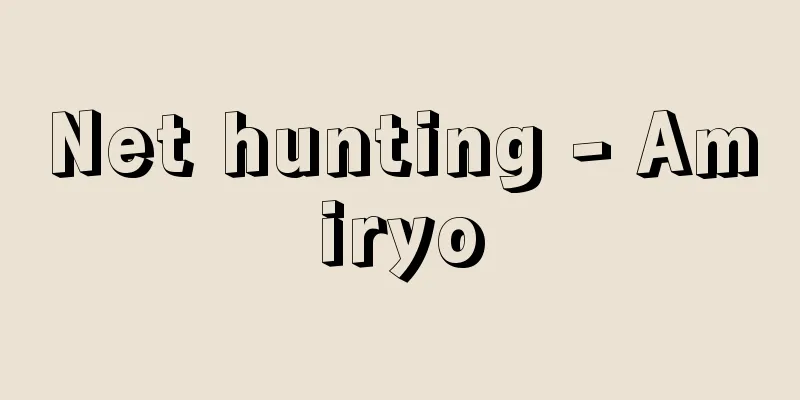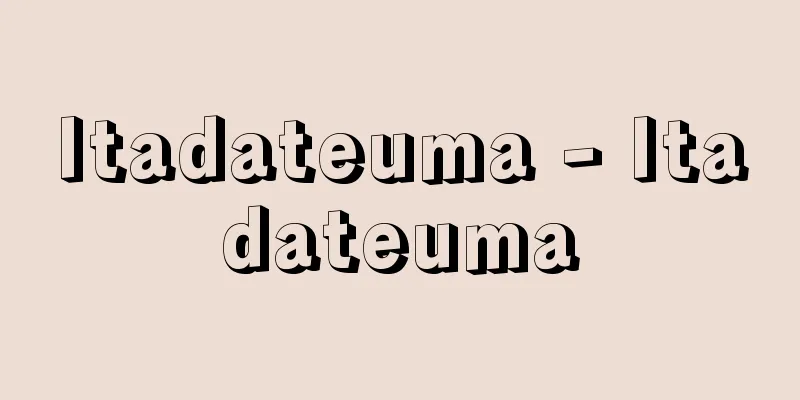Net hunting - Amiryo

|
Hunting involves capturing mainly birds using nets. Along with snares, nets are primitive hunting tools that humans have used since ancient times, and in Japan, remnants of cast nets, scoop nets, set nets, stretch nets, and other tools have been discovered in ruins from the Jomon period 7,000 to 8,000 years ago. The manufacture of thin, strong nets and the development of advanced net hunting techniques seen today came only after the invention of spinning machines. They are made from silk, cotton, hemp, and other vegetable fibers, or synthetic fibers such as nylon, and are made to suit different uses, such as stretching, covering, and scooping on the ground or in the air. In recent years, most are made from nylon, which is easy to handle and inexpensive, but its high stretchability means that prey can spread the mesh and escape, making the capture efficiency somewhat lower. The prey for net hunting is generally birds and small animals such as sparrows, house sparrows, ducks, snipes, quails, turtle doves, pheasants, and hares, but in India, tigers were also caught with nets until the 20th century. While gun hunting targets individual birds, net hunting targets an unspecified number of prey. Also, while gun hunting requires a high cost of ammunition, net hunting requires only the repair of the net. However, because selecting the right place to set up the net requires a high level of experience, net hunting is mainly practiced by professional hunters. [Kunihiko Shirai] Net typeThere are three types of nets: legal hunting tools, nets with restrictions, and free hunting tools. There are four types of legal nets: (1) Musou nets, (2) Tension nets (limited to valley-cutting nets, bag nets, and hare-hunting nets), (3) Thrust nets, and (4) Cast nets. Each type has a variety of styles depending on the type of target prey, the location of the net, and the size of the net. To hunt using legal nets, a net hunting license must be obtained and the hunter must register with the prefecture. Examples of nets with restrictions include tension nets, such as mist nets. Tension nets were the most widely used type of net hunting, but mist nets became restricted hunting tools in 1978 (Showa 53), and their use was restricted except for those recognized as legal hunting tools. To use them, a bird and animal capture permit must be obtained from the Minister of the Environment. Free hunting nets do not require a license or permission as long as they are used outside of the prohibited areas during the hunting season. This applies when nets used to catch fish, insects, etc. are used. The nets used at the Imperial Household Agency's duck hunting grounds are hand-held nets called "sade nets" that can catch ducks without harming them. According to Articles 11 and 39 of the Law on the Protection and Management of Birds and Beasts and the Rationalization of Hunting, it is possible to catch hunting birds and animals without using firearms within the grounds of a residence surrounded by a fence, fence, or similar structure without obtaining permission from the Minister of the Environment or the prefectural governor, as long as it is not in an area where hunting is prohibited, and only during the hunting season. In this case, even foreign envoys without licenses can use sade nets to catch ducks at the Imperial Household Agency's duck hunting grounds. [Kunihiko Shirai] [Reference] |©Shogakukan "> Cast and thrust nets ©Shogakukan "> Unrivaled Source: Shogakukan Encyclopedia Nipponica About Encyclopedia Nipponica Information | Legend |
|
網を用いておもに鳥類を捕獲する狩猟。網は罠(わな)とともに人類が古くから使用してきた原始的猟具で、日本では7000~8000年前の縄文文化時代の遺跡から、投げ網、掬(すく)い網、伏せ網、張り網などの残証が発見されている。今日のように細くて強い網の製造や高度の網猟技術の発達は、紡績機械が発明されて以後である。素材は絹、木綿、麻その他の植物性繊維かナイロンなど化学繊維で、地上または空間に、張る、かぶせる、すくうなどの用法にあわせてつくられている。近年はナイロン製が多く、扱いやすいうえ安価だが、伸長性が大きいので獲物が網目を広げて逃げることがあり、多少捕獲能率が劣る。 網猟の獲物は一般にスズメ、ニュウナイスズメ、カモ類、タシギ、ウズラ、キジバト、キジ、ノウサギなどで鳥類や小型獣が多いが、インドでは20世紀に至るまでトラを網で捕獲していた。銃猟が一羽一頭を目標とするのに対し、網猟は不特定多数の獲物を相手にする。また、銃猟では実包消費(実弾費用)が高価につくが、網猟は網の修理費程度ですむ。しかし、網の設置場所を選定するのに高度の経験を必要とするため、網猟はおもに職業的狩猟者の間で行われている。 [白井邦彦] 網の種類網には、法定猟具としての網、使用制限付きの網、自由猟具としての網の3種類がある。法定の網は、(1)無双(むそう)網、(2)張り網(谷切(やつき)り網、袋網およびノウサギ用張り網に限られる)、(3)突き網、(4)投げ網の4種で、目的の獲物の種類、設置場所、規模の大小などにより、それぞれ多様な形式がある。これら法定の網を用いて網猟を行うには、狩猟免許のうちの網猟免許を受けて、都道府県に狩猟登録をしなければならない。使用制限付きの網としては、かすみ網に代表される張り網がある。張り網は網猟のうちもっとも手広く行われたが、まずかすみ網が制限猟具となり、1978年(昭和53)前述の法定猟具として認められたものを除き、使用を制限された。その使用には、とくに環境大臣から鳥獣捕獲許可証を受けなければならない。 自由猟具の網は、狩猟期間中に捕獲禁止区域外で用いる限り免許も許可も必要としない。魚類、昆虫類などの捕獲用玉網を流用する場合がこれに該当する。なお、宮内庁の鴨場(かもば)で使われる網は、鴨を無傷のままで捕獲することができる「叉手(さで)網」と称する手持ちの網である。「鳥獣の保護及び管理並びに狩猟の適正化に関する法律」第11条および第39条の規定により、狩猟不可能な区域でなければ、狩猟期間内に限り、環境大臣または都道府県知事の許可を受けなくても、垣、柵(さく)その他これに類するもので囲まれた住宅の敷地内において銃器を使用しないでする狩猟鳥獣の捕獲等は可能となっており、宮内庁の鴨場では免許をもたない外国使臣等も叉手網を使用して鴨を捕獲できる。 [白井邦彦] [参照項目] |©Shogakukan"> 投げ網と突き網 ©Shogakukan"> 無双網 出典 小学館 日本大百科全書(ニッポニカ)日本大百科全書(ニッポニカ)について 情報 | 凡例 |
Recommend
Limit design method
A general term for a method of designing a structu...
Iai Kenchu - Iai Kenchu
…In ancient times, it was called kenden, in the M...
Iodine (iodine)
Periodic table Element symbol = I Atomic number = ...
Guandi - Kantei
A title given to the Shu military commander Guan Y...
Potassium nitrate
Nitrate of potassium. It occurs naturally as salt...
Sokenji Temple
This temple is of the Rinzai sect of Buddhism, My...
Cut flowers - Kiribana
〘Noun〙① Flowers cut with the branches and stems st...
Stumpf - Carl Stumpf
German psychologist. Born near Würzburg, he loved...
frost action
...Although the extent of periglacial regions var...
Clurman, Harold
Born: September 18, 1901, New York [Died] Septembe...
Prunus spinulosa (English spelling) Prunusspinulosa
…[Hiroshi Aramata]. … *Some of the terminology th...
Perrot, Jules
Born: August 18, 1810, Lyon [Died] August 18, 1892...
Kimigayoran - You're welcome
An evergreen shrub of the Agavaceae family (APG c...
《Asian Drama》 - Asian Drama
…His research fields as a scholar are wide-rangin...
Hyblaeidae
...A general term for insects of the Hyblaeidae f...









